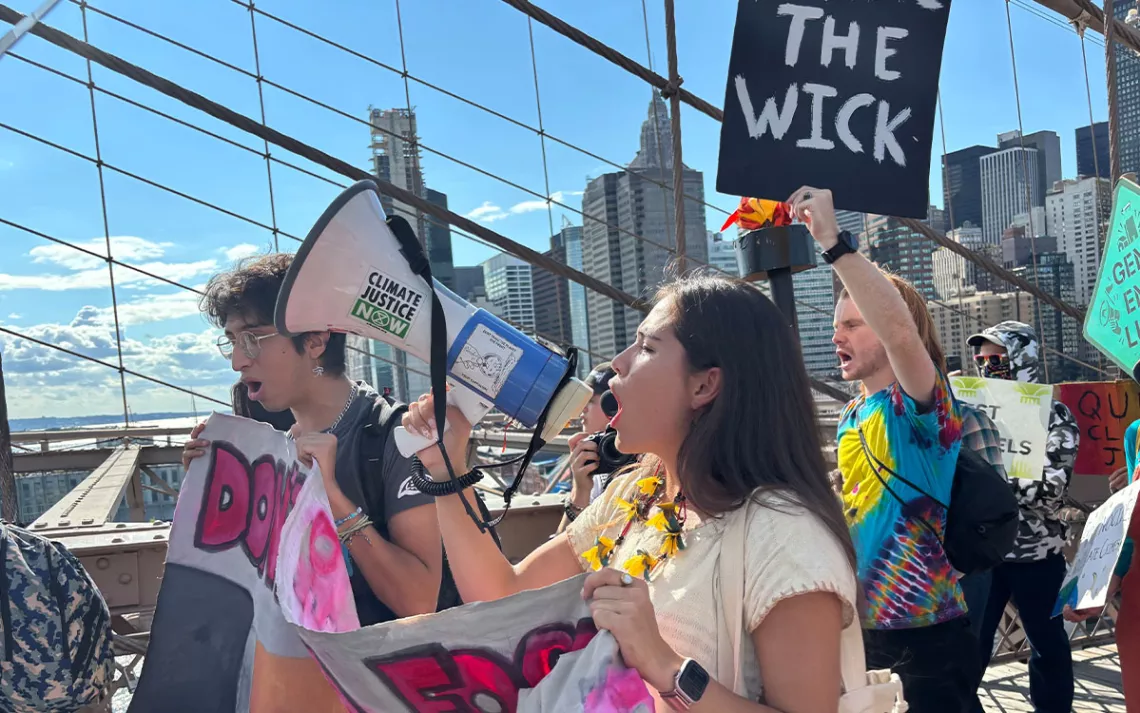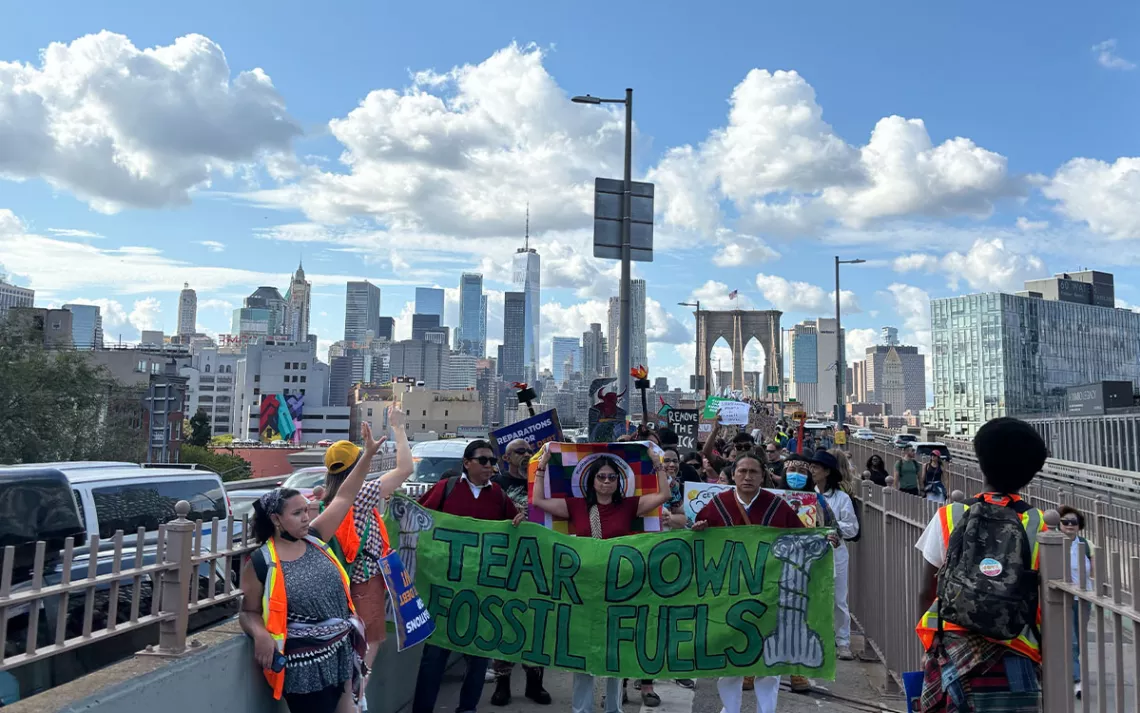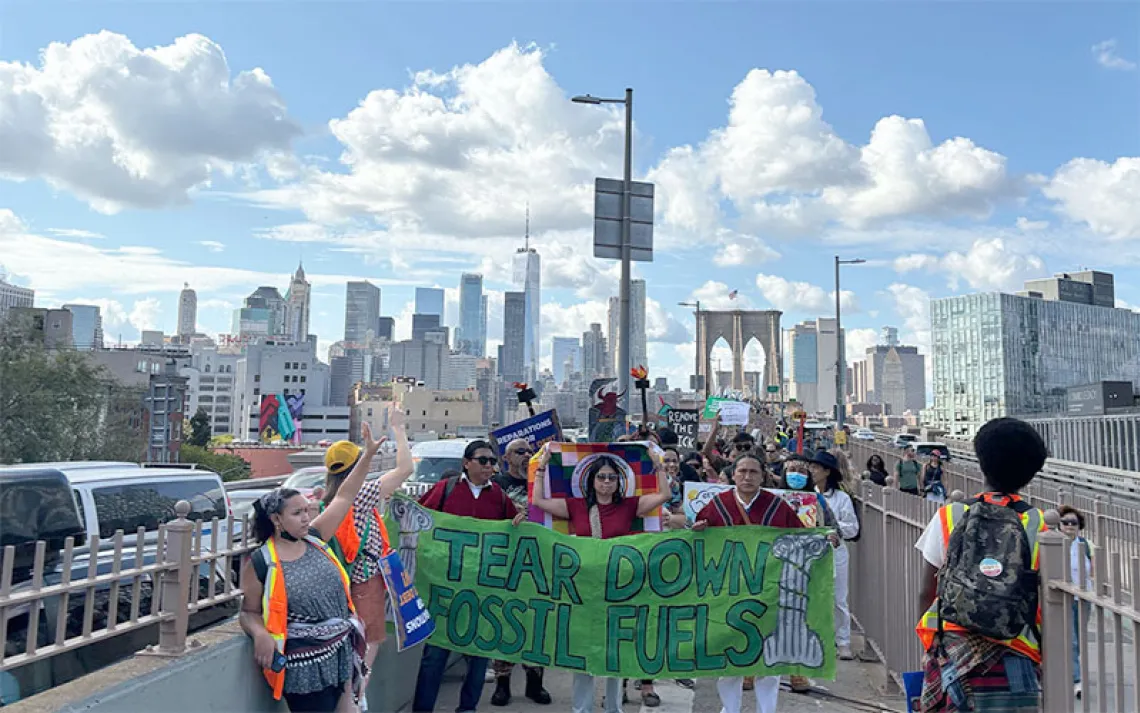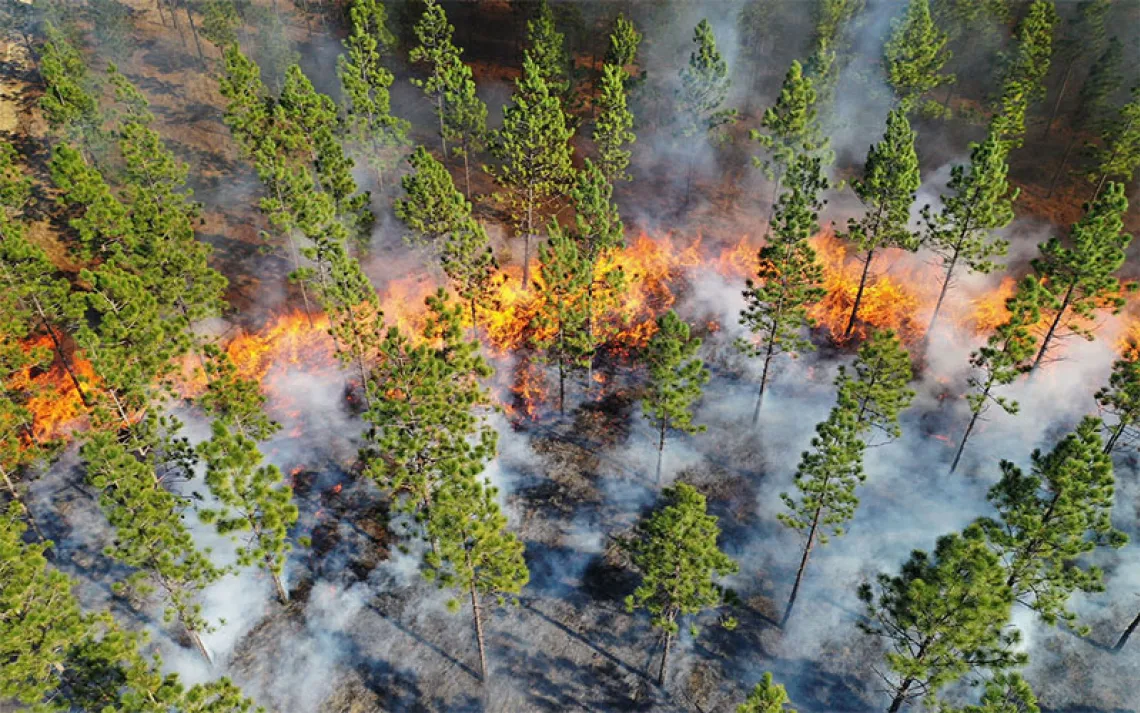At NYC Climate Week, Young Activists Demand Transformative Change
Climate-justice advocates skip the glitzy confabs in favor of street protest

Xiye Bastida, a New York–based climate activist from the Otomi-Toltec Indigenous community in Mexico, marches down the Brooklyn Bridge alongside protesters. | Photo by Sara Hashemi
While New York City officials, United Nations staff, and corporate executives prepared for the talks and panels that have become emblematic of the annual Climate Week, young climate-justice activists were making other plans. For weeks they’ve been getting ready for grassroots actions around the city—protests and marches to demand bolder action on climate change than what they expect to hear from the official proceedings. They kicked off their week of action last Friday, September 20, as hundreds of protesters left school and work to march from Manhattan’s Foley Square to Brooklyn’s Borough Hall to call for an end to the era of fossil fuels.
“In our targeting of the pillars of fossil fuels for the strike, we are centering the whole of Climate Week around this idea of equity and justice and ending the era of fossil fuels, because that's what we need to focus on,” 16-year-old Lena Goings, an organizer with the NYC chapter of Fridays for Future, told Sierra a few days ahead of the march.
The youth organizers believe that Climate Week—which is officially sponsored by the United Nations and the City of New York and runs from September 22 to September 29—does not go far enough to address the causes of the climate crisis, so they want to directly challenge the “pillars of the fossil fuel industry”: fossil fuel funders, polluters, and political leaders. “We need to be focusing on stopping all expansion of fossil fuels and helping the communities that are affected the most.”
Helen Mancini, a 17-year-old organizer with Fridays for Future, agrees. “A lot of Climate Week is about adults having these fancy conversations in fancy venues about climate change,” she said. “Really, this is an essential issue that affects us all, and most importantly, affects the working class and young people who are not in a lot of those spaces and rooms at climate week.”
Frustration at the rarefied atmosphere of the official events has led grassroots activists to take to the streets in the hope that they can grab some of the attention of the world leaders gathered in the city for the United Nations General Assembly. “So many people are here in New York for the Summit of the Future, and so many leaders are too. It’s really important that we all march together and show that the movement is alive, and we're still demanding things from our leaders,” Mancini said.
At last Friday’s strike, protesters demanded urgent change. It was 22-year-old activist Xiye Bastida’s fourth climate march. Bastida was one of the organizers for the 2019 strike, when over 60,000 people marched through the streets of New York to demand climate action as part of a massive global day of action. This year, Bastida was marching with an Indigenous delegation from South America to advocate for an approach to solving the climate crisis that includes biodiversity, Indigenous peoples, and all Earth systems. Despite coming year after year, Bastida has not given up the fight. “Perseverance is a responsibility that we have because it's honoring our ancestors, honoring everything that they did to keep our knowledge alive. And it's also an honor to future generations,” she said, as she held up a banner declaring: “Don’t be a fossil.”

An Indigenous delegation representing various South American communities led the march. Many of them spoke about the impacts climate change and extractivism have had on their region. | Photo by Sara Hashemi
Like many other young New Yorkers, Goings has seen the effects of the climate crisis with her own eyes. “Just going to school, there have been so many times that I’ve nearly passed out from the heat,” she said. “And I think that really shows you how severe the warming is getting, but also how desperately we need new climate infrastructure and upgrades to our existing infrastructure as the planet continues to warm.”
One of Fridays for Future’s main demands is for New York governor Kathy Hochul to sign the Climate Change Superfund Act. The act has already passed the New York State legislature and now only awaits Hochul’s signature to become law. It would require the companies with the largest greenhouse gas emissions to pay their share of climate-associated infrastructure investments in the state. Many protesters carried signs with the same demand as they walked across the Brooklyn Bridge.
Given the wavering from elected officials like Hochul, many youths are feeling like they need to lead the charge against climate change. A lot of young people who have begun to learn about the scope of the climate crisis have taken on the role of adults, Goings said, because they feel like adults aren’t taking the crisis seriously enough.
“We find ourselves at the receiving end of climate catastrophes, and yet we did not contribute [to] the problem,” said Hilda Flavia Nakabuye, a 27-year-old climate activist from Uganda who founded Fridays for Future in her country when she was 21. “But then we have a future ahead of us, so we need to remind our leaders, decision-makers, and governments to make policies that involve our say. We need to be part of these spaces so that we can draw from our experiences to offer solutions to combat the climate crisis.”
Last Friday’s march was just the first of many protests planned for this week. The Summer of Heat on Wall Street campaign continues to hold civil disobedience actions at the Citigroup headquarters in Manhattan; among other demands, protesters are demanding that the company meet with residents of the Gulf of Mexico who live on the front lines of the United States’ record breaking oil and gas extraction. On Tuesday, activists delivered thousands of petitions to Governor Hochul, calling for her to sign the Climate Change Superfund Act. Later in the week, protesters will march to the headquarters of the investment firm Blackrock to demand debt cancellation for the Global South and the defunding of fossil fuels.
Mancini wants people to know that the number one demand of young climate activists across the world is to tear down the fossil fuel industry. “While the conversation around climate, especially during Climate Week, strays to many other things,” she said, “the biggest thing that the world needs to do right now is to get off fossil fuels to protect our future, and to listen to young people who've been demanding that.”
 The Magazine of The Sierra Club
The Magazine of The Sierra Club



